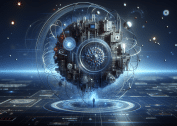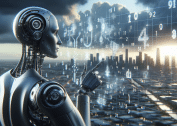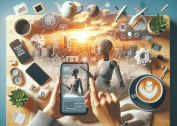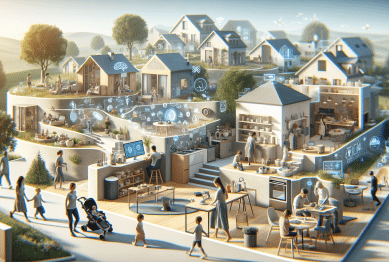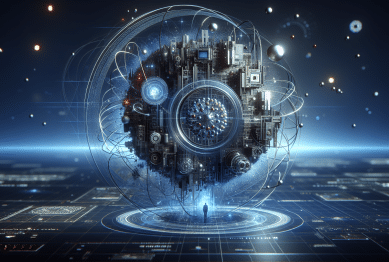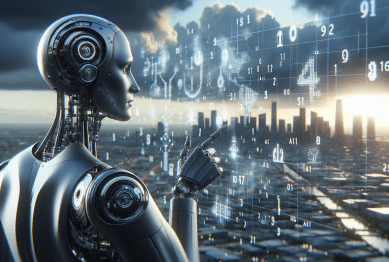Artificial intelligence isn’t just for tech giants or researchers anymore. This guide shows how AI shapes daily experiences, from virtual assistants to smarter healthcare, and explores what makes its technology both innovative and accessible.
Exploring AI in Daily Routines
Artificial intelligence, often referred to simply as AI, has rapidly evolved from a niche field into a central part of modern life. Many people now interact with AI dozens of times a day. It powers familiar tools such as digital voice assistants, personalized recommendations on streaming platforms, and even spam filters in email inboxes. What stands out is that AI quietly weaves itself into routines, providing convenience and efficiency without needing constant attention. For example, waking up to a music playlist curated by an algorithm or replying to emails suggested by smart mail features—these moments show how AI simplifies daily living.
AI seamlessly blends into more devices than most realize. Smart thermostats learn patterns to optimize warmth and reduce energy costs. Robot vacuums navigate crowded living spaces using computer vision. Even traffic signals in cities now use AI to adjust timings, aiming to minimize jams and improve traffic flow. These subtle integrations demonstrate the diverse range in which artificial intelligence touches lives of users everywhere. The automation behind these routines often enables individuals to focus attention on tasks they find more meaningful or productive.
Some people remain amazed by the speed at which AI enhances comfort. The ability to automate mundane chores, retrieve news, or even translate conversations in real time creates wider access, making technology feel more personalized. It’s not just about convenience; AI-driven systems help identify efficiencies in ways that weren’t possible a decade ago. The world continues to see new innovations that hint at an even more integrated, intelligent future.
AI in Healthcare: Smarter Support
The health sector has seen significant transformation because of artificial intelligence. Tools powered by machine learning diagnose diseases faster and sometimes more accurately than earlier methods. For instance, some hospitals employ AI-driven systems to analyze X-rays or MRIs, allowing for quicker results. This technology supports clinicians by flagging abnormal results, creating a safety net that can reduce human error (Source: NIH).
Virtual health assistants now help patients manage medication timetables, track symptoms, and even answer frequently asked questions. In times of uncertainty, users benefit from such systems because they offer round-the-clock responses and reminders, improving adherence to treatment plans. Telemedicine platforms powered by AI facilitate remote consultations that analyze symptoms and direct individuals toward the next steps, increasing efficiency and access to care. By analyzing trends on a large scale, AI also aids in predicting disease outbreaks and optimizing resource distribution.
Researchers are leveraging AI for medical breakthroughs by processing endless amounts of research data at high speed. This supports more effective drug discovery, trend analysis, and even personalized treatment recommendations. The value of AI in the medical field continues to expand, creating optimism that its future contributions will further improve patient support, diagnosis accuracy, and healthcare resource management. It’s a shift toward a system that is both responsive and adaptive.
Shopping and Finance with Smart Algorithms
Algorithm-driven shopping has become a key aspect for many consumers. Whether searching for apparel or comparing grocery prices, artificial intelligence analyzes product availability, preferences, and current deals. These suggestions are tailored specifically for individuals, which helps cut down on search times and brings more relevant products into view. Retailers also use predictive analytics for managing their inventory, adjusting restocks to reflect what buyers actually want, and reducing waste (Source: MIT Sloan).
In finance, AI shines by automating tedious processes, helping detect fraud, and even enabling real-time risk assessment for transactions. Banking apps deploy chatbots that explain complicated terms, guide users through their accounts, or identify unusual payments requiring review. AI-driven savings and budgeting tools nurture healthy financial habits, empowering individuals to track expenses and plan ahead. This evolution in digital finance makes information more accessible while maintaining robust security protocols.
Stock trading and investment platforms now rely heavily on AI algorithms, parsing huge streams of global financial data. These systems spot trends quickly and can offer tailored portfolio suggestions. Despite the complexity behind these tools, the result is software that delivers insights in plain language, contributing to more informed decision-making for users. Through these changes, artificial intelligence continues to influence both spending and saving behaviors in everyday life.
Smart Cities and Connected Infrastructure
Many cities have quietly become smarter thanks to AI’s integration into critical infrastructure. Urban planners now use predictive modeling and real-time monitoring to optimize everything from waste collection to building energy use. These systems help reduce traffic congestion, monitor air pollution, and maintain public safety by analyzing surveillance footage through machine learning techniques (Source: NREL).
Public transportation networks benefit immensely from AI’s predictive power. Systems enhance route planning, adjust schedules dynamically, and respond swiftly to incidents. Some buses and trains employ sensors that communicate usage patterns, allowing schedules and resources to be redirected where they’re most needed. The collective result is improved reliability for commuters, less downtime, and smarter use of limited municipal resources.
AI-driven lighting systems, energy optimization in buildings, and early warning alerts for infrastructure faults all represent how cities embrace connected technology. These solutions save money, protect the environment, and ensure smoother urban living. While the scope is wide, current projects suggest even more advances are on the horizon, with integration happening at nearly every level of city management for improved quality of life.
Education Transformed by Artificial Intelligence
Education has changed dramatically with the spread of artificial intelligence into classrooms and online learning platforms. Adaptive learning systems use AI to track a student’s performance and then adjust content dynamically, reinforcing topics that need practice and moving forward when mastery is achieved. This customization provides a more engaging experience (Source: Stanford).
Language apps rely on AI-driven chatbots to hold simulated conversations and provide instant feedback on grammar and pronunciation. Teachers benefit as well; automated grading tools and plagiarism checkers free up educators’ time and deliver faster, objective evaluations. For individuals learning remotely, AI makes it possible to access tutoring, peer collaboration, and learning analytics anytime, anywhere. Such flexibility increases educational access for different learning styles.
The AI transformation also supports learners with disabilities by providing real-time captioning, text-to-speech, and custom interfaces. Its ability to translate languages or convert text to audio ensures broader participation, bridging gaps in traditional educational resources. The continuous evolution of AI tools in education fosters more inclusive, responsive environments for every student to thrive.
Looking Ahead: AI’s Potential for Good
Public attitudes toward AI fluctuate, often shaped by headlines or unfamiliar jargon. Yet there is growing evidence that artificial intelligence holds wide-reaching positive potential, especially when guided by clear ethics and inclusive development. Researchers focus on developing frameworks for AI that are transparent, explainable, and fair while also safeguarding privacy (Source: Princeton).
One exciting area is AI for social good—using algorithms to improve disaster response, predict wildfires, or detect endangered wildlife. These tools can process data at scale, providing leaders with rapid, actionable insights. As industry leaders collaborate with nonprofits and governments, more projects focus on closing resource gaps and fostering equitable outcomes. Responsible AI development remains a top priority.
What comes next for artificial intelligence? Experts see continual integration into critical fields like energy, supply chains, and crisis management. By promoting education, transparency, and inclusiveness, society can better harness AI’s benefits while reducing potential risks. The partnership between humans and intelligent systems promises to enhance problem-solving and shape a brighter future.
References
1. National Institute of Biomedical Imaging and Bioengineering. (n.d.). Artificial Intelligence. Retrieved from https://www.nibib.nih.gov/science-education/science-topics/artificial-intelligence
2. MIT Sloan School of Management. (n.d.). AI in retail: Applications brands are using. Retrieved from https://mitsloan.mit.edu/ideas-made-to-matter/ai-retail-applications-brands-are-using
3. National Renewable Energy Laboratory. (2022). Artificial Intelligence and Smart Cities. Retrieved from https://www.nrel.gov/news/features/2022/artificial-intelligence-smart-cities.html
4. Stanford Graduate School of Education. (n.d.). How is AI changing education? Retrieved from https://ed.stanford.edu/news/how-ai-changing-education
5. Princeton University Center for Information Technology Policy. (n.d.). Artificial Intelligence Ethics. Retrieved from https://ai.ethics.princeton.edu/
6. World Health Organization. (2021). Ethics and governance of artificial intelligence for health. Retrieved from https://www.who.int/publications/i/item/9789240029200



